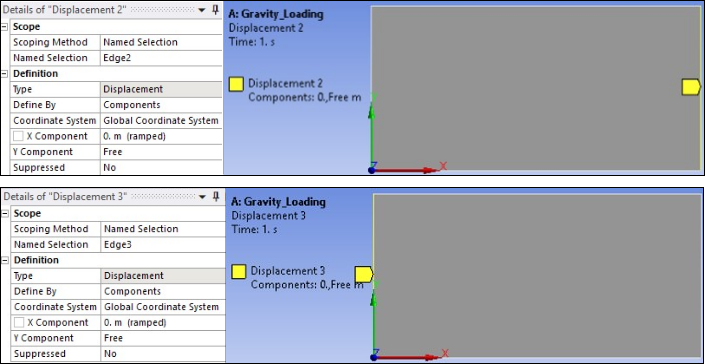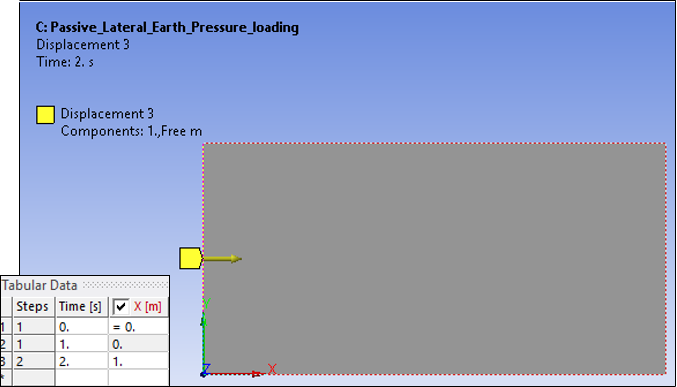The retaining wall is assumed to be rigid. The horizontal movement can therefore be applied directly on the soil via Dirichlet boundary conditions.
The retaining wall on both sides of the soil is assumed to be frictionless. Therefore, only a fixed horizontal movement is necessary. This is accomplished using the displacement boundary conditions shown below.

The bottom movement of the soil structure is supported via rolling boundary conditions. To accomplish this, the X Component of Displacement is set to Free as seen below.

In the first load step, an at rest earth-pressure state is generated by applying a
gravitational acceleration of on the soil in the vertical direction.

In a following load step, an active earth-pressure state is generated by horizontally moving the soil nodes of the left boundary away from the soil using a specified displacement of ux = -0.075 m. This case is accomplished by applying a displacement value of -0.075 m the second load step as shown below.

Alternatively, a passive earth-pressure state is produced by horizontally moving the soil nodes of the left boundary towards the soil using a specified maximum displacement of ux = 1 m. This case is accomplished by applying a displacement value of 1 m the second load step as shown below.



